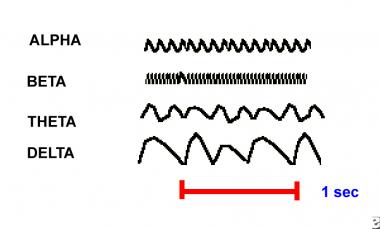The year is 1924. A German psychiatrist by the name of Hans Berger has been conducting experiments to test for telepathy between human minds – working off of the recent discoveries of radio waves and electromagnetic waves. His colleagues know that Berger will never amount to much – but Berger still presses on, with limited knowledge about electricity or mechanics. Looking like a mad scientist on a mission, he straps his unsuspecting subjects to a chair and laughs maniacally while sticking electrodes on their scalps and recording the corresponding brain electrical disturbances with glee. Now, however, this procedure is pretty common in labs and hospitals around the world.
Hans Berger did, in fact, amount to something, contrary to his colleagues beliefs – he was the inventor of the electroencephalogram, or the EEG, a device that is used to record and measure brain waves. And as interesting as EEGs and Hans Berger are, these will be our topic today.
Known in the scientific world as neural oscillations, brain waves are simply the product of millions of neurons firing electrical impulses in one direction, causing an impulse strong enough to be measured from the scalp through an EEG. There have traditionally been four different types of brain waves, but, more recently, a fifth has been added. These are called Delta, Theta, Alpha, Beta, and Gamma waves, and their frequencies are measured in Hz (hertz).

Picture From: http://emedicine.medscape.com/article/1139332-overview#a2
Delta waves are below 4 Hz, and they occur in deep sleep, although more in infants and children than adults. Infants and young children can have delta wave activity even in waking hours, but this same activity in an awake adult is quite abnormal, and too many Delta waves can cause difficulty thinking and concentrating.
Theta waves are another brain wave that occur during sleep, except that they are found in all ages, including adults. Between 4 to 8 Hz, Theta brain waves can even occur in adults that are awake, although this should be infrequent. They can be present in awake adults when they are day dreaming or drifting in and out of sleep. According to the Center for ADD website, people with ADHD produce “excessively low frequency” Theta waves and excessive Theta waves while awake can reflect learning disorders and a lower attention span.
Alpha waves, at 8-12 Hz, occur during the waking, yet relaxed state. These waves are the ones that Hans Berger observed in the 1920s, and can be seen in a subject when their eyes are closed and they are relaxed and not distracted by stimuli. Alpha brain waves have been linked with creativity and, according to a study by the University of North Carolina Chapel Hill, may even reduce depression.
Beta brain waves are between 12-40 Hz, and occur when we are alert in our daily lives, and when we are actively thinking, problem solving, or finishing important tasks. At the same time, beta brain waves occur during deep REM (Rapid Eye Movement) sleep, where dreams occur. Excessive beta waves may indicate anxiety and obsessiveness, hyperactivity, and sleeping problems.
Finally, we have Gamma waves, the strangest of them all. At 40-100 Hz, Gamma brain waves are associated with high levels of concentration and thinking and making connections within the brain. According to the Center for ADD website, high gamma wave activity is associated with “high levels of intelligence, enhanced memory, compassion and natural feelings of contentment”, while low levels may indicate learning problems. Interestingly enough, a study of Tibetan monks that were advanced meditators showed that they had high levels of gamma waves.
Now, many sites and clinics offer brain wave services, such as neurofeedback therapy – therapy using music, video games, and other outside sources to regulate brain waves. How legitimate are their claims? According to an article by The Washington Post, the signals are pretty mixed, where some case studies show major improvements and there are a few good tests, but many scientists remain largely skeptical. A meta analysis (which is basically a collection of a bunch of smaller studies) on neurofeedback therapy in people with epilepsy shows a net positive effect of the therapy, yet another meta analysis published in June 2016 shows no positive effect of neurofeedback therapy on ADHD patients. For every positive study, there seems to be one with no effect, so the science is still not completely sure on this one.
Either way, since Hans Berger’s accidental discovery in the 1920s, neural oscillations have been a topic of study in labs all over the world, and scientists are getting closer to figuring out how brain waves affect our ability to think, sleep, and relax.
SOURCES
http://centerforadd-az.com/resources/understanding-brainwaves
http://emedicine.medscape.com/article/1139332-overview#a2
http://www.sciencedirect.com/science/article/pii/S0010945215001033
Brain Waves and Beta Buzz: The Wild Story of Neural Oscillations
5 Types Of Brain Waves Frequencies: Gamma, Beta, Alpha, Theta, Delta
http://www.brainandhealth.com/brain-waves/
http://www.jaacap.com/article/S0890-8567(16)30095-8/abstract

